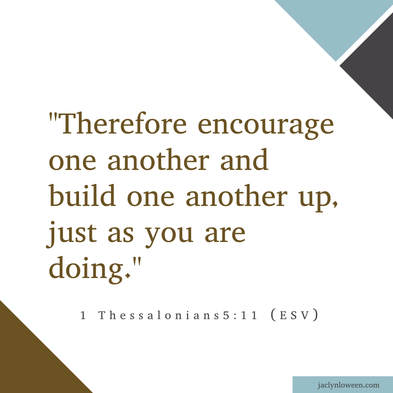|
UA-115346459-1
Recap: Purpose and Context of the, Go and See, Series
Go and See, Part 7 Introduction Throughout the last six sessions of this study you have taken time to consider how the following guide you toward understanding and living out your purpose: God’s word and commands in the Bible, your life’s story (both the times of celebration and of trial), and your unique design (natural talents, personality traits, and spiritual gifts). Yet, there is one more aspect of our lives that needs examining and diagramming in order for us to fully comprehend one of the most essential elements of our purpose--relationships. From the beginning it is this relational component of our being that sets us apart from all other created things. Our internal desire and need for relationships was set into us by a God who “made us in His image” by breathing His spirit into Adam and then into Eve. In the beginning human and God walked together in the Garden and lived in relationship with one another. Our design from the start was intended to be a “helpmate” type of relationship with others and a “walking day-to-day” relationship with God. Even though the Fall wrecked the natural ability for these relationships to flourish, the root of our design is unchanged. We were made for one another. We were made in the image of a relationship-focussed God who operates out of an everlasting, triune relationship--Father, Son and Holy Spirit. Thus, taking inventory of our relationships, understanding the impact they have had on us, and then setting forth to invest our lives by investing in relationships with others is not optional--it is fundamental to living out the role we have been set in this time and place to fulfill. Everything in our being is oriented toward relationship--with God and others. Yet, for most of us, relationships can be one of the greatest sources of challenge, frustration and disappointment. However, the level of challenge found in growing and maintaining healthy relationships does not give us permission to dismiss the importance, necessity and significance of God’s design for us to live in relationship with one another. In fact, the challenges should signal to us the need to pull on the armor of God and fight for the relationships given to us by the God who sets each of us in our time and places for a divine and holy purpose. All the people in your life are known to God. All the relationships in your life are known to God. Believe that. Let it propel you toward choosing to go and see how each relationship in your past and present is guiding you toward knowing and living out your purpose. Each relationship is a endowment you have been given to invest in while the master is away. Each relationship is abounding with opportunities to invite Jesus into multiply your “loaves and fishes” to meet needs. Each relationship is a precious gift. Let that lens guide your reflections and prayers as you walk through this session. Reflection & Application Throughout my life I have been overwhelmingly blessed with teachers, coaches and colleagues who inspire me and push me toward goals I wouldn’t likely have worked toward had I not known them. Several months ago I ran into my high school track coach. We have kept up some over the years, but my visits to my hometown are infrequent to say the least. Thus, interaction with people from my upbringing are sparse. Yet, there is a deep well of gratitude and appreciation in my heart and soul for the ways the adults from that time in my life helped me become who I am today. As a result, I have determined that whenever I have opportunity to honor these people and thank them for how they shaped me, I will seize it. As our conversation unfolded that day, I knew this was an opportunity to be seized. So, as awkward as it felt, I let the words of gratitude and appreciation leave my heart and mouth. His response caught me off-guard. He looked me straight in the eyes and said, “You need to always remember that impact goes both ways. Your life has impacted mine more than you will ever know.” I was at a literal loss for words and small pools of water set themselves in the corner of my eyes. This was something I had never in my 36 years of life considered: The way I was living was impacting people older than me. The testimony of what I did as an adult was bringing courage and change to the people who had raised me. How could this be? Yet, this is the truth. Impact works both ways. Even though my motivation in the above conversation was to express my gratitude, I was gifted with a word of encouragement and a reminder that all the relationships in our lives are designed to provide strength one to another. And isn’t this what the second greatest commandment is all about? Teacher, which is the greatest commandment in the Law?” We absolutely cannot live out the second greatest commandment if we are not in relationship with others. One of the ways I feel most loved is when I am affirmed and encouraged by the sincere words of another. Words not about a specific accomplishments but ones that affirm that my unique design is recognized. Ones that reveal my life isn’t invisible. Those words that confirm that how I am living is pointing others to love, grace, and freedom. These are the words that I want to encourage others with as well. But I can’t get there unless I am living in a close enough relationship to others in order to be sincere, honest and truthful. In addition, I can’t see how others are building me up and fanning my flame if I don’t stop and reflect on who God has set in my path to guide me, build me up, and provide opportunities to live out my purpose. They say the first step in overcoming a bad habit is admitting you have one. I believe that can be turned around a bit and applied here: The first step to seeing the role relationships have played in molding and guiding you toward your purpose and giftings is admitting those relationships exist. The next step is listing each and defining the impact. And then seizing every opportunity to express gratitude and affirmation for the gifts these relationships have provided. Reflect on and answer these questions:
Digging Deeper To get started on this journey of placing relationships in our minds as gifts and guides toward understanding our purpose and vision, let’s go and see what the Bible reveals. Go grab your Bible (or click on the links here) and read 2 Timothy 1 and Psalm 78:6-8. Highlight the verses that stick out to you. A bit of context to get us started: The Apostle Paul is writing from prison, to his disciple, Timothy. It is important to note that Paul opens with words of encouragement and affirmation to his “son” in the faith, Timothy. In addition, Paul calls into recognition Timothy’s heritage and the role it plays in his calling (future assignments). Paul is building Timothy up through a very sincere recognition of the impact Timothy’s faith and perseverance has had on Paul’s faith. Secondly, Paul points Timothy back to the faith-heritage from which he has come. Both of these forms of affirmation stem from the relationships that Timothy can look to when he needs evidence of the Spirit living in him. One is biological, the other is not. Yet both are the reasons Timothy can confidently keep spreading the flame to others. In other words, our spiritual heritage and relationships are to light our way, give us courage and hope to persevere in our purpose and vision. “For this reason I remind you to fan into flame the gift of God, which is in you through the laying on of my hands” (2 Timothy 1:6, NIV). This session asks you to consider your heritage and its impact on your present and future. In addition, you will be asked to recognize and begin to plan for the legacy (impact) of your life. The relationship between Paul and Timothy reveals that one’s spiritual heritage may not be built from those who are genetically members of his or her family tree. Likewise, one’s legacy may extend beyond biological or familial relationships. Because in Christ, we are all one family--all adopted sons and daughters and heirs to the Kingdom. Our mission here is to help one another get there. We can take nothing with us from this world, except relationships. Hence the need to truly know how invest in relationships. In the passage from the book of Psalms, we see yet another reason to recognize, record and share the relationships that have built our faith, purpose, and gifts--that the next generation will know. Taking the time to record our faith story and the lineage of our faith may be instrumental in leading our children (biological or spiritual) to steady faith. We want to give your children their own faith and relationship with God, but we need to recognize that the roots of their growth begin with the relationship we have with them. So to for us. Our faith might be our own, but we were molded, equipped and guided by those who have gone before us. As we start leading others it can be easy to forget the relationships that lead us to where we are. Fighting to remember how the flames got started in our faith and sharing those stories with others is important and impactful because it fans the flame in our souls and the souls of those who hear it. Tool 7: Recalling Key People - Family Tree of Faith Tool Defined: Recording your lineage of faith. The aim of this activity is for you to create an image or timeline that reflects the ways God has used relationships to grow and guide you. In addition, taking ownership of your spiritual lineage--both what you receive and what you pass down--is incredibly beneficial to your Faith journey. Thirdly, this tool can illuminate for your soul God’s sovereignty over the relationships in your life, producing joy, thanks and praise for your creator. Also, recording your lineage of faith with an image or timeline is another way to set up stones of remembrance so that the generations to come can know and see the work and blessings of God in your life. Instructions:
Closing It is a battle to pursue understanding our gifts. It is a battle to intentionally pursue depth in relationships. It is a battle to believe that the effectiveness of the parts of the body of Christ hinges on the connectedness of each of those parts to Christ and to another. But we have all the tools we need for battle: Christ’s atoning blood that washes our conscience clear, the Holy Spirit who illuminates our calling and gifts, and relationships around us that tangibly tether us to our united mission: to display God’s glory, love and works to the little corner of the Earth we find our two feet planted for now. Ask the Holy Spirit to reveal to you more clearly all the ways he has entrusted gifts to you to love him more completely and love his people more intentionally. Pray for discernment to know in what area(s) of your life you need to intentionally pursue deeper relationships with others. For example, friends, neighbors, co-workers, mentors, parents, children, those who don’t know God yet, widows, orphans, or the elderly. Pray that you will know what obedience looks like for you and that you would know how to access the power and creativity to obey.
0 Comments
Leave a Reply. |
Jaclyn LoweenEDUCATION Links to all the, Go and See Study, sessions.
Archives
June 2018
|
Proudly powered by Weebly




 RSS Feed
RSS Feed